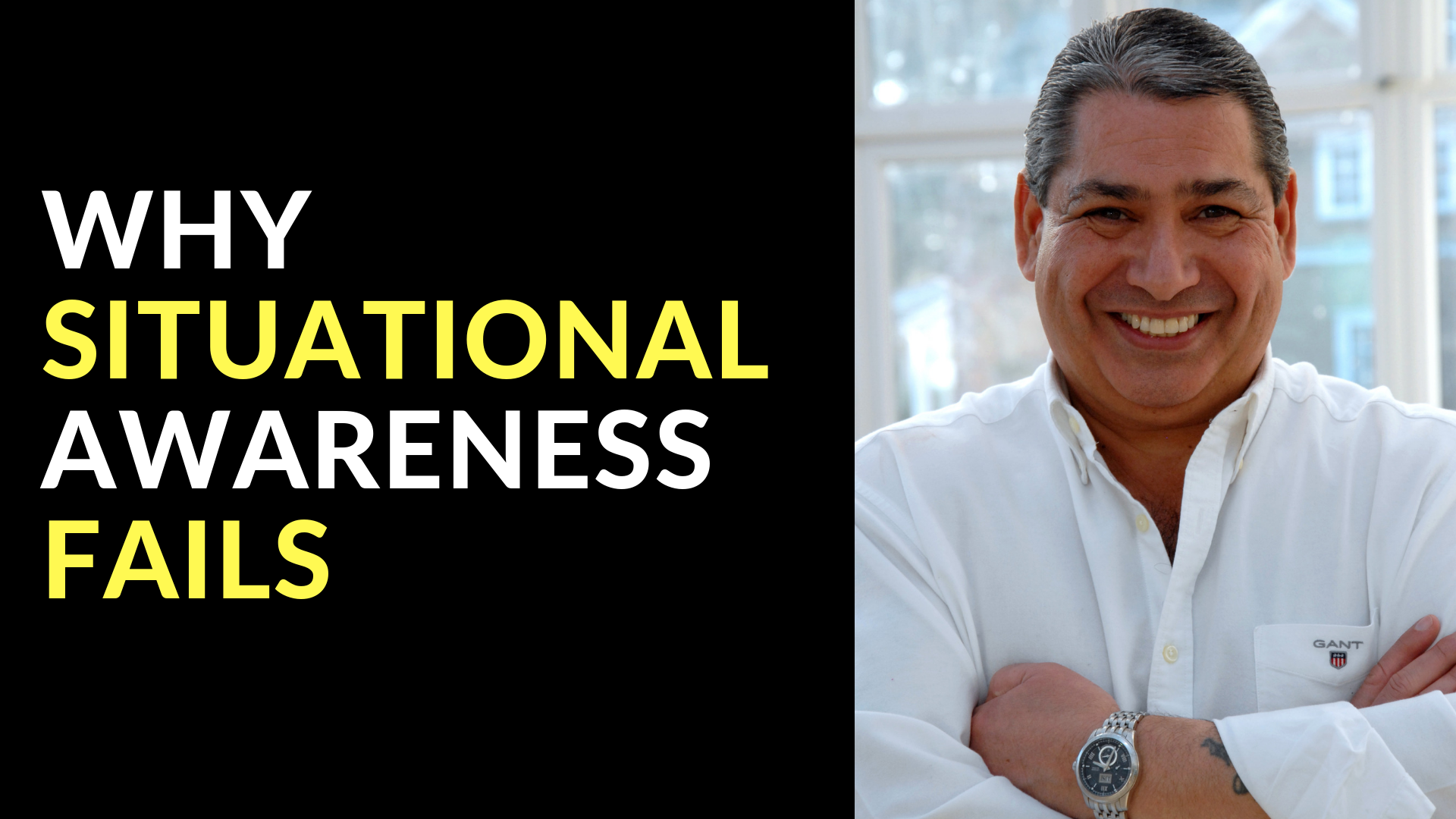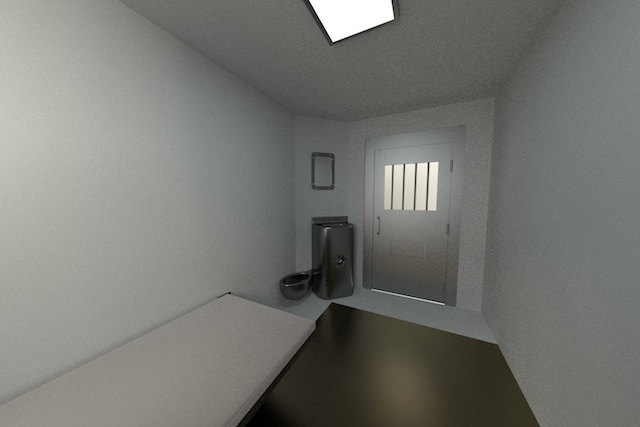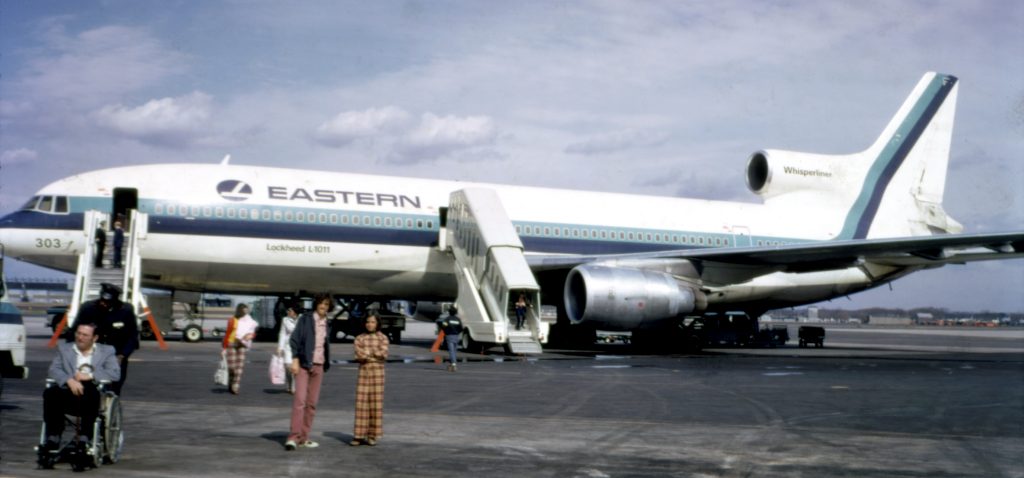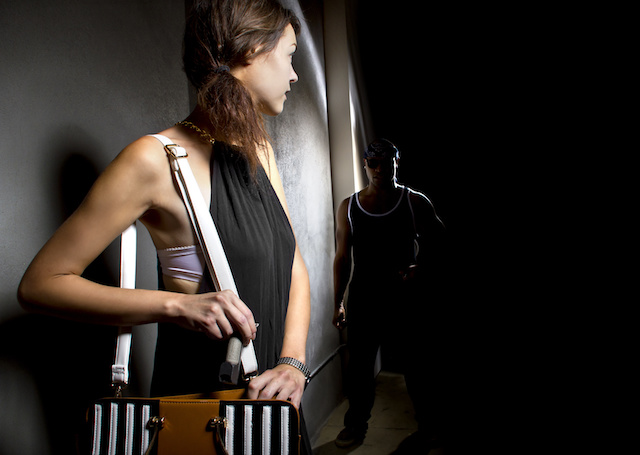Why Situational Awareness Fails
“Situational awareness” is the term used to describe the capacity of an individual or a team to keep track of the multiple factors that together impinge on safety.
An example of this can be found in personal safety/self-defence training courses where individuals are taught to become more aware of their environment and what is going on around them to help reduce the risk of them becoming a victim of crime.
The Health and Safety Executive talk about it and they provide the following definition: “Situational awareness is being aware of what is happening around you in terms of where you are, where you are supposed to be, and whether anyone or anything around you is a threat to your health and safety”.
But the HSE also go on to state “Our situational awareness can be further reduced in times of high workload or when under pressure to get a job done to time. In these situations, it is essential to maintain a high level of situational awareness to stop accidents and near misses”.
In short, when a person’s cognitive load is high because multiple demands are placed on them, their decision-making ability can be compromised and their ability to increase their awareness of what is happening around us (even the obvious) is missed.
This is why situational awareness fails, but to understand this more please read on.
The Seclusion Story
I was recently speaking to someone who works in a mental health hospital.
In the hospital, there are specially built seclusion rooms, where violent and aggressive patients can be ‘secluded’ to protect themselves and others.
The person I was speaking to was telling me that during one incident a very violent patient was being restrained by staff so that the patient could be controlled and then moved and placed in a seclusion room.
This particular patient had a history of violent behaviour and many staff had been injured by him, so naturally, staff were scared and anxiety levels were high in the restraint team.
What followed was a very violent struggle, but eventually, a team of very tired and anxious staff managed to control the patient and he was moved into the seclusion room.
Now here comes the next dangerous part of the procedure!
Staff now have to release their holds and exit the room through a very narrow doorway before the patient had the opportunity to violently assault any of the restraint team.
Three people were holding the patient down and one member of staff was at the cell door overseeing the procedure.
The team were already tired from the initial restraint, anxiety levels were once again high for fear of being assaulted and everyone one was highly focused on a safe extraction.
Out went the first two staff – no problem there.
Then out went the last member of staff.
The door was slammed shut and everyone took a breath. The member of staff in charge checked the team and everyone was alright.
Breathing returned to normal and the team started to relax free from the risk of harm.
Then they heard a knocking coming from the seclusion room. At first, they thought it was the patient, but they knew that if it was the patient he would be banging the door very ferociously.
So the team leader approached the cell door to investigate and what he saw shocked him.
Inside the cell was a cleaner.
But how could the cleaner have gotten in there?
When the team extracted the door was slammed shut and locked and no-one saw a cleaner enter whilst they were being debriefed right outside the seclusion room door.
They immediately opened the door and let the cleaner out who was visibly shaken.
Everyone, including the cleaner, was puzzled by the situation.
On inspection of the CCTV, the puzzle was solved.
What had happened was that the cleaner had walked into the cell right in front of the member of staff at the door whilst the patient was being restrained in the room.
But why didn’t anyone see the cleaner and why didn’t the cleaner see the staff?
Surely these highly trained members of staff are trained in situational awareness?
The following will explain.
Eastern Air Lines Flight 401
On December 29, 1972, Eastern Air Lines Flight 401 took off from New York to Miami with 163 People on Board.
It later crashed into the Florida Everglades, killing the pilots and the flight engineer, two of 10 flight attendants, and 96 of 163 passengers died.
Overall 101 people died and this is why ….
On the descent, the pilot pulled the lever to lower the wheels.
A light that should have illuminated on the dashboard to show that the front wheel was down and secure had failed to do so.
This could mean one of two things:
1) Either the wheel was not down, or
2) There was a problem with the light fitting.
The pilot had no option but to place the aircraft into a holding pattern to fix the problem.
The pilot pulled the light from its fitting and blew on it to remove the dust.
The crew pondered if there was something wrong with the wiring.
And as they circled, whilst frantically trying to troubleshoot the problem, they failed to notice a new problem: the autopilot had inadvertently been disengaged and the plane was descending, but they could not feel this descent because their senses were deceived by the plane’s motion.
As the plane dropped through 1,750ft, an alarm sounded in the cockpit, but the crew didn’t hear this either, because they were so focused on the light that the alarm didn’t register.
Eastern Airlines 401 crashed into the Everglades and 101 people were killed.
On the surface, this incident may seem like gross negligence.
How could trained professionals fail to hear an alarm?
How could they fail to notice a plane descending?
Doesn’t this show that their minds were wandering?
Were the Crew Inexperienced?
Now you could be forgiven for thinking that maybe the flight crew were inexperienced, but that is far from the truth.
The flight Captain was a veteran pilot who had been with the airline for 32 years accumulating a total of 29,700 flight hours throughout his flying career.
The First Officer (co-pilot) had 5,800 hours of flying experience, and the Second Officer (the flight engineer) Donald Louis had 15,700 hours of flying experience.
This was a very experienced flight crew.
It is only when one puts oneself in the high-pressure reality of the cockpit, with escalating pressure and multiple demands arising at the same time, does the mistake become not just explicable, but predictable.
Indeed, in the 1970s a litany of accidents happened in an uncannily similar way.
In 1978 United Airlines Flight 173 crashed in Portland, Oregon, when the crew were so preoccupied with a landing gear problem that they didn’t notice that the plane was running out of fuel.
One year later a Douglas DC8 aircraft flew into the side of a mountain, killing everyone on board when the crew became focused on a problem with the wheels.
The Case of Dr Hadiza Bawa-Garba
Dr Hadiza Bawa-Garba was a junior doctor who was convicted of manslaughter by gross negligence in 2015 and was sentenced to two years in prison suspended for two years after the death of Jack Adcock in 2011, a six-year-old who was admitted to Leicester Royal Infirmary in 2011 with diarrhoea and vomiting.
Bawa-Garba made three key errors.
- In her preliminary diagnosis, she gave too little weight to Jack’s need for oxygen.
- Later on a review of the first blood results, she did not appreciate the full significance of elevated lactate.
- When blood results were obtained for the afternoon handover, she did not register that the raised creatinine indicated abnormal kidney function.
On the surface, these errors may seem negligent.
How could Bawa-Garba have failed to realise the full significance of the need for oxygen?
A Deeper Look At The Case
If we look into this case deeper a more complex picture emerges.
The consultant who was supposed to be in charge was not in the hospital that day.
At the trial, it was explained that a diary mix-up meant that he was lecturing at a university outside the city.
Also, the registrar covering the children’s assessment unit was not there either.
Bawa-Garba had to cover for them both.
Then there was a hospital IT failure, which meant that the senior house officer was delegated to phone for results from noon until 4 pm. This put another strain on the efficiency of the hospital’s processes.
Bawa-Garba was covering for this colleague too.
Dr Bawa-Garba had also only just returned from 13 months’ maternity leave and had little experience of working on a child assessment unit.
She was also supposed to have an induction to get up to speed, which would have boosted her situational awareness, providing a broad perspective of the various wards, the patients and how to manage her workflow and to integrate all of Jack’s information into her moment-to-moment decision-making.
But for staffing reasons, the induction didn’t happen.
On that fateful day, Dr Bawa-Garba also found herself covering six hospital wards across four floors, with dozens of children directly under her supervision, many who were very sick indeed.
Her first act on arrival on shift was to respond to a “crash bleep” as a child went into cardiac arrest.
This caused her to miss the morning handover (a crucial issue that would affect her situational awareness), but enabled her to save a child’s life.
During her shift, she performed a lumbar puncture and she stabilised a child experiencing epileptic fits.
Every few minutes she was taking the calls of GPs, providing advice to midwives, making diagnoses, offering reassurance to worried patients and parents, attempting to sustain an overview of the pieces in a multi-dimensional jigsaw and perhaps wondering how long it would be before she could quench her parched throat or grab a bite because it was difficult for her to take any breaks because the wards were so stretched.
On the most demanding day of her career, her actions averted multiple tragedies, but amongst those multiple critical decisions, she also made three errors that resulted in the death of little Jack.
It just so happened that all three errors, which partially fed into each other (this is sometimes called a “trajectory of error”) were focused on one patient: Jack.
Given all of the facts, it could be reasonable to ask why Bawa-Garba didn’t absent herself from the hospital, as that might have prevented the death?
After all, if a pilot arrives at the airport and decides that it is unsafe to fly, everyone goes home and nobody dies.
The fact is, if Dr Bawa-Garba had walked out, patients would have been infinitely more exposed because the remaining staff would have been stretched even more, so. by staying, Dr Bawa-Garba put patients first. She was doing her job and what she believed to be the right thing to do.
In August 2018 the Court of Appeal quashed the High Court ruling and ruled in favour of Dr Hadiza Bawa-Garba’s appeal against the controversial High Court case, which saw her struck off the medical register in January.
You can read the full BBC Panorama news account here – https://www.bbc.co.uk/news/resources/idt-sh/the_struck_off_doctor
So What Does All This Mean To Us?
Many training programmes provide advice and instruction on how to not become a victim of a crime or a violent assault, and this is commonly referred to as ‘situational awareness’.
However, imagine a workplace where staff are overworked due to other staff being absent. Where they are attempting to handle multiple demands placed upon them by their employer, to the extent that they don’t even have the time for proper breaks throughout their working day.
Also, imagine that these same members of staff are exposed to angry and frustrated service users, patients or members of the public who don’t feel that they are being cared for or listened to properly or being treated as a valued customer.
In these situations, we have all of the ingredients of a perfect storm where staff face increasing levels of anger, aggression and violence.
Now let’s say that the employer’s response to this is to provide these staff with training in situational awareness so that staff can become more aware of their surroundings and spot any potential risk to themselves and their colleagues.
On the surface that makes sense and would seem a good solution.
But, is it also imaginable and foreseeable that the training in isolation (if the underlying factors are not actually addressed) is just adding to the member of staffs already high cognitive workload?
Is it any wonder then that someone who is already working under pressure, with multiple demands placed upon them, and where their decision-making has been compromised by their cognitive workload, is likely miss the obvious.
In essence they would not be ‘situationally aware’ enough to spot the signs that impinge on their safety?
KISS – Keep It Simple Stupid
When teaching self-defence or physical restraint skills it is critically important to keep the techniques simple.
This means basing them on evidential research that shows what works best in situations when emotions are high, an individual will be anxious or scared, and their ability to process complex cognitive information is compromised.
We also have to consider not just the environment, but also the fact that the individual or team may be tired, overworked, stressed and focussed on other factors, such as the fear of failure or possibly even discipline, which they may face if their actions are challenged.
In short, we have to ‘Keep It Simple’ because when faced when people are scared and emotions are high because they face a threat they become cognitively ‘Stupid’ (and I don’t mean that in the derogatory sense of the word).
As a Self Defence or Physical Restraint Trainer, we must bear all of the above in mind for the people we are training, and we must provide them with techniques that are easy to learn, easy to remember and easy to recall in when they need to do so.
I’m Interested in Your Thoughts So Please Leave A Comment Below
I’d be very interested in your thoughts so if you have any please leave them below and if you are interested in finding out more about our BTEC level 3 Self-Defence Instructor Award Course or our BTEC Level 3 Restraint Instructor Award Course please click here:
BTEC Level 3 Self-Defence Instructor Award Course
BTEC Level 3 Restraint Instructor Award Course
Best Regards
Mark Dawes






Insightful and informative, as ever Mark. Thanks
Hi Mark,
Full explanation, excellent analysis and summary by yourself. However, it is management and HR that require (S.A) training, then they legally need to implement it with strict penalties if not.
Brilliantly explained. The point on, adding to the trainers already stretched cognitive workload, is something we could all miss. This for me shouts out for more realistic training (pressure testing) in order to protect against unfamiliarity to aggressive situations. Some of our trainees deal with maybe, just one or two incidents between refresher training, it’s a massive cognitive overload when an occurrence happens. With regard to my past career, firemen train every day for the worst situations, which allows them to absorb the stresses of a serious situation with relative ease whenever they arise.
its very interesting and informative. I will not neglect situational awareness completely. Sure we are sometimes overloaded (work, stress…)but we have something what is not just neglected but often suppressed – our emotions & instincts specially those “negative ones” such fear and anger. I am teaching my students not to suppress those emotions, even not to control them and also I don’t coin them as a negative emotions. They are our very friendly emotions and in the case for example fear, this unpleasant feeling in such tense situations is great adviser. Fear sharpen our senses, fear constantly reminding – stay focus, be AWARE! It’s not about to behave like a paranoid person, but once you feel something is wrong, fear kick in and start reminding you – be aware! Listen your instinct. We become “deaf” to our instinct and suppressing fear (good reminder to be aware) and anger (great source of energy or energy booster). That hospital case, what you mention, I would say not just medical staff but also other staff such cleaners a must have special training and teach them how to behave in such institution. Going to do cleaning in to seclusion room while staff is wrestling with violent patient is nothing to do with situational awareness, it’s lack of proper training for rest of the staff. It’s great story, which can be use as a “black box” thinking, learn from it and make proper training for staff, cleaners included – clean empty only seclusion room :). In self-defence – if you see “dodgy person”, be aware, stay focus, if you can, avoid him. You taking money from ATM, cover keyboard when you typing your pin number, don’t let stranger to get close to you and so on, you see group of youngsters with hoodies drinking bear and being noisy, avoid them, or they start approaching you and you can’t avoid them, get ready. Hope my English was good enough to explain what I mean. Thanks to my previous jobs, I had to break very often this golden rule of “avoid 3 S” – stupid people, stupid places and stupid times. There was situations when I have to be very aware of situation or our surrounding and is not as difficult as look like a. :D. People get killed by car if they are not aware whats happening around them.
Hi Mark,
Thanks for the blog.
As you have said Situational Awareness failed in these cases, but it is still a strong skill to have.
If you are an individual who works alone or works late at night, knowing what is happening around you is a powerful thing in keep you safe.
When i was working in Libya, we were always aware of the Situations that we were going into with our Principal, this was due to doing our homework before we left the property. The problem is that it has to be fluid in most cases as we all know things change.
Daily logs are a great way of finding out what is/ has been happening during the day, and filled in correctly are a good reference to see if there are any areas that could be improved.Handovers are another very important area that allows people to know what the situation has been like during the shift.
As your blog points out, the Doctor missed the handover and missed what was happening.
I can understand what you are saying with Situational Awareness failing in the above cases, but without knowing what is going on around you could be dangerous.
Are the public services like the police and fire service not made aware of the situations that they are going into, most of these do not fail.
I do totally agree with you when it comes to teaching self defence. Keeping it simple has been around for years.
When William Ewart Fairbairn started teaching Close Quarter Combat to the SOE and Commando units during the second world war his methods had to be simple and effective because he did not have time to waste. His system was honed on the streets of Shanghai, and he had the scars to prove it. A lot of his techniques are still taught to SF soldiers around the world.
Gross motor skill techniques are easier to teach to people in a short space of time, not everyone has time to attend a class for an hour a week for 12 weeks to become effective.
There is also a big difference in Martial Arts, Combat Sports and Self Defence, but that is another argument from where you come from and your background.
Very interesting article. I never worked with very disturbed mentally ill people (who have my deepest sympathy) but i did work with adults with learning difficulty and i know from experience a) how stressful it can be trying to deal with challenging physical behaviour and b) how little training and support I got. So it’s not surprising the cleaner got accidentally locked in. Moving on, nobody needs reminding how ‘unaware’ so many people are these days glued to their phones. How important are these bloody chats or texting sessions compared to personal safety?
It doesn’t matter whether you are working as a healthcare assistant, nurse, therapy assistant etc, we all have extra workloads on our unit/hospitals than we can manage but they still expect 100% if not more, rushing about forgetting things as you are thinking what needs doing later on so you don’t forget and then you do as someone else asks you to help them, it’s a vicious circle that somehow needs to be broken. As trainers we need to make sure that we keep delegates interested on courses and be aware of our surroundings
Thanks for sharing Mark.
As with so many of your posts, you make us look at a bigger picture and review our own training practices.
That was a great article and very insightful Thanks Mark
Thanks for sharing Mark
Really interesting article and I agree with the points you have raised. This is my frustrations with some martial arts instructors who provide self defence with complex moves. This also applies to dealing with people in offices and retail where conflict may arise. By providing simple techniques which are easy to use, when you are in an emotional state you will be better placed to be effective in your response and resolution. We train people on handling difficult situation, conflict resolution and management and we use techniques people can remember and implement when presented with a difficult situation.
Where there is risk of physical harm, this becomes even more important.